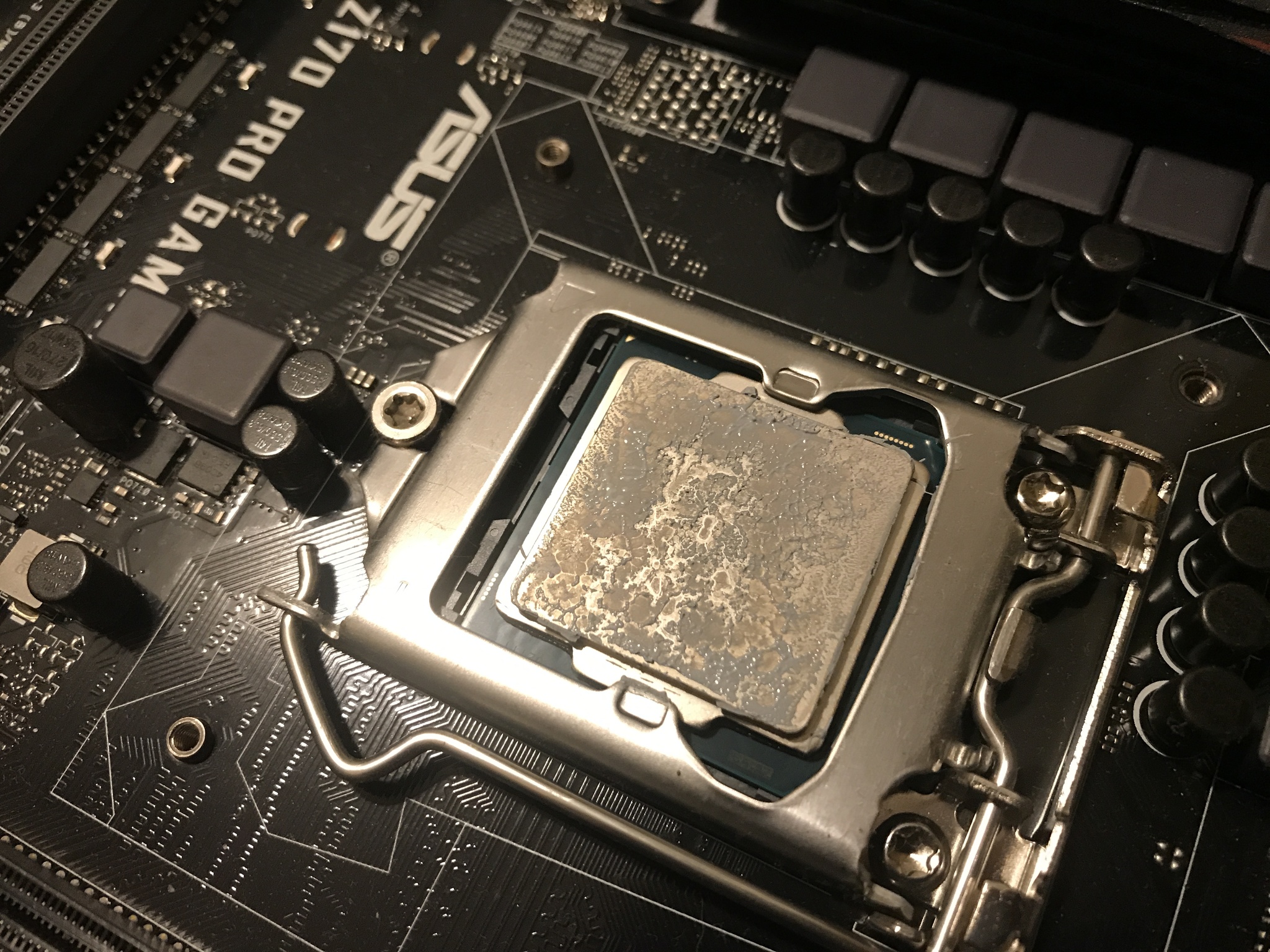Many people struggle with applying thermal paste. There are many theories, strategies and passed-down advice floating around the internet, but the best solution is often to keep things simple.
Use a small dot, about the size of a grain of rice or two, on the center of the CPU’s integrated heat spreader. The rest of the surface should be free of any grease or residues.
What is Thermal Paste?
When building a PC it is important to use good quality thermal paste to ensure that heat is being transferred from the CPU and to the cooler or heatsink. It also helps to minimize any microscopic gaps or air bubbles between the surface of the processor and the heatsink, which can limit the effective transfer of heat and potentially harm your expensive hardware.
Most popular thermal pastes are either liquid metal or ceramic-based. Both have extreme thermal conductivity, but liquid metal is electrically conductive while ceramic-based pastes are not.
Aside from the price, the other main consideration when choosing a thermal paste is how easily it can be spread and evenly applied. Kooling Monster Kold-01 is an excellent choice because it spreads out very thinly and evenly, which means that a little bit goes a long way in terms of ensuring effective thermal transfer between the processor and the heatsink. It also does not run or ooze out like many other brands of thermal paste, which can cause a mess and potentially short circuits in your motherboard if it comes into contact with any other components on the motherboard.
Why is Thermal Paste Important?
Many people forget to include thermal paste in their build plans or don’t think about it until they are almost finished. This can be a costly mistake.
The primary role of a CPU’s thermal paste is to minimize microscopic air gaps and irregularities between the CPU and the cooler or heat sink. These flaws can prevent the CPU from cooling correctly and potentially damage the hardware in the long run.
A well-made, quality thermal paste has the ability to significantly lower the temperature of the CPU and other core components by transferring excess heat away from them. Thermal Grizzly’s Kryonaut and Arctic MX-4 pastes are some of the most popular choices among PC enthusiasts due to their excellent performance and long-term stability.
Some thermal pastes use metals such as silver to improve their performance and are available in easy-to-use syringes for quick application. However, these pastes are electrically conductive and should not be used directly on the CPU’s Integrated Heat Spreader (IHS) with exposed components nearby – this can cause them to short-circuit.
How to Apply Thermal Paste
Whether you’re overclocking your CPU to play triple-A games or just watching YouTube videos, you need to make sure that your CPU is cool. That’s where thermal paste comes in handy. It conducts heat from your CPU to your cooling solution, keeping it cool and working optimally.
When installing thermal paste, there are a few things that you should keep in mind. First, ensure that the surface of your cooler and your processor are clean – a quick wipe with a non-lint cloth and some isopropyl alcohol will do the trick.
Next, you should apply a small dot of paste to the center of your processor. You can find plenty of guides online, from a vertical line to a middle dot to surface spread, but it’s important that you don’t use too much or you could risk damaging your CPU. After applying the paste, let it dry for a minute or two. This will help the thermal paste to bed in and create a strong seal between your processor and the cooler.
What to Avoid When Applying Thermal Paste
A common mistake that PC-builders make is using too much thermal paste or applying it in a way that reduces its effectiveness. It is important to remember that thermal paste serves as a gap filler to replace the microscopic air gaps between the IHS and the heat sink. Therefore, it only needs a thin layer to do its job. Using too much will create a thick layer that reduces the efficiency of the paste by putting the two metal surfaces too far apart.
Incorrect manual application of thermal paste can also result in air bubbles that can negatively impact the thermal conductivity. Additionally, it is important to use a clean finger or lint-free cloth when applying the thermal paste in order to avoid transferring any oil from your hand onto the CPU surface.Pc Thermal Paste

